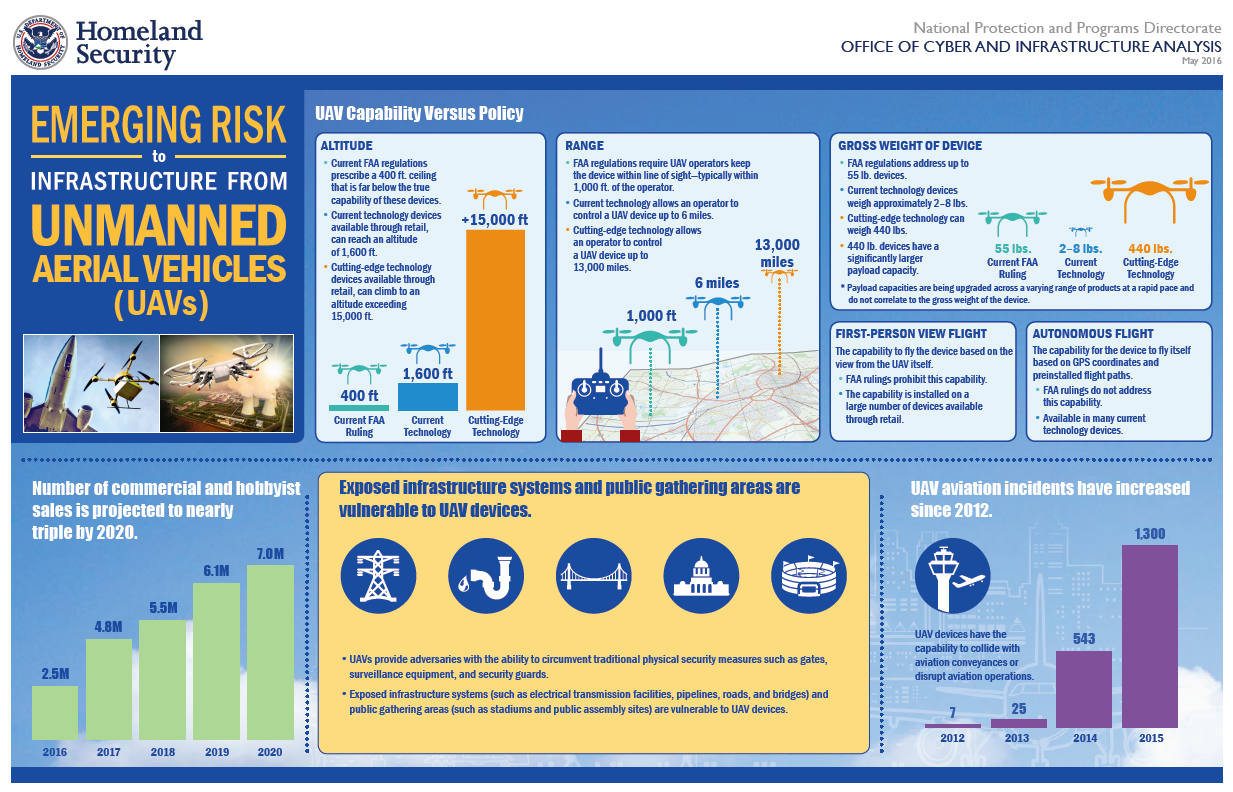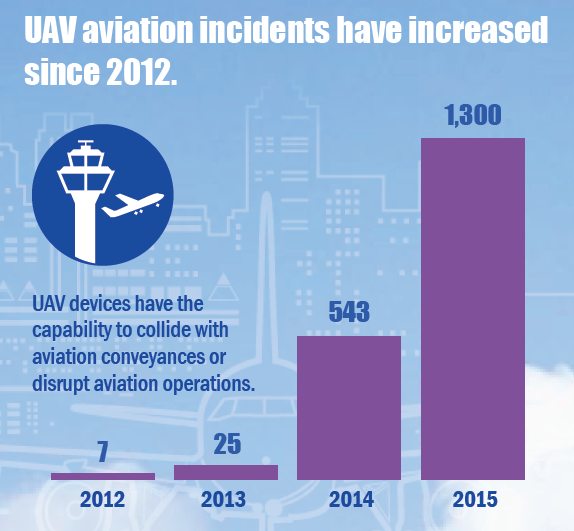Number of commercial and hobbyist sales is projected to nearly triple by 2020.
Exposed infrastructure systems and public gathering areas are vulnerable to UAV devices.
• UAVs provide adversaries with the ability to circumvent traditional physical security measures such as gates, surveillance equipment, and security guards.
• Exposed infrastructure systems (such as electrical transmission facilities, pipelines, roads, and bridges) and public gathering areas (such as stadiums and public assembly sites) are vulnerable to UAV devices
ALTITUDE
• Current FAA regulations prescribe a 400 ft. ceiling that is far below the true capability of these devices.
• Current technology devices available through retail, can reach an altitude of 1,600 ft.
• Cutting-edge technology devices available through retail, can climb to an altitude exceeding 15,000 ft.
…


